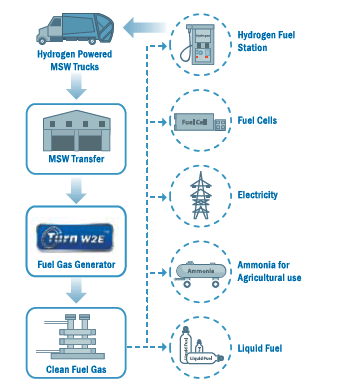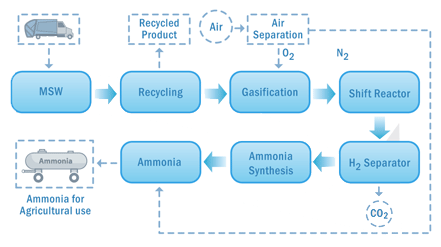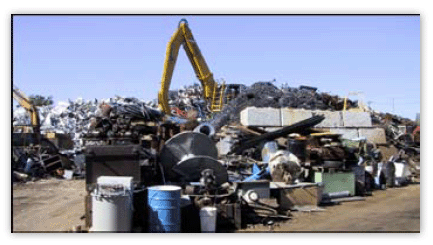| Wastes Common to MSWTS |
| |
| Waste Category |
Generated By |
Contains |
Municipal solid
waste (MSW) |
households,
businesses, institutions, and
industry |
food containers, packaging,
food wastes, and paper
products |
| Yard waste |
biomass materials
from general outdoor
maintenance |
leaves, grass clippings, tree
trimmings and brush, often
seasonal |
Household hazardous
waste (HHW) |
hazardous materials
generated by
households |
cleaning products, pesticides,
herbicides; used automotive
products (e.g. motor oil, brake
fluid, antifreeze); paint |
| Recyclables |
materials that can
be reprocessed for
manufacture into new
products |
paper, newsprint, ferrous
metals, plastic, glass
containers, aluminum cans,
motor oil and tires |
Construction
and demolition
(C&D) |
debris from demolition
or construction of
buildings, roads, other
structures |
concrete, brick, wood,
masonry, roofing materials,
sheetrock, plaster, metals and
tree stumps |
| |
|
This mixed stream of MSWTS fluff presents a challenge for most
clean energy extraction processes. The W2E technologies were
created to overcome this challenge. The energy is easily, efficiently
extracted from the combination wastes via this environmentally
sound methodology. It is then processed further to electricity,
CHP, or steam as needed, to meet local energy demands. Options
for the final selection of this energy source include the conversion
to hydrogen, ammonia, and Fischer-Tropsch liquids, which is
determined by the local energy demand.
|
| Because of the proximity of MSWTS to population centers, they offer
ideal locations for distributed renewable and alternative energy
generation, including hydrogen production and dispensing. As the
use of hydrogen moves into the mainstream, hydrogen vehicles,
including on-the-road and off-the-road vehicles will be able to
procure the renewable fuel produced from the waste at the local
AEC. W2E solutions for energy from MSW at the MSWTS include
the production of steam or electricity, hydrogen, or ammonia for
energy and/or fertilizer use, either individually or in almost any
combination. |
| |
 |
| |
| AMMONIA PRODUCTION |
| |
For the production of ammonia, the solid MSW fluff is reacted with
oxygen under substoichiometric conditions to produce clean fuel gas– the gasification process as above, but using the oxygen instead of
air, reserving the N2 separately for the ammonia synthesis.
|
| The process begins by separating the air into O2 and N2. The O2 is
used for the gasification process and the subsequent production of
a pure stream of compressed hydrogen. Nitrogen and hydrogen are
subsequently brought together for the production of ammonia in the
ammonia synthesis reactor. |
| |
 |
| |
| ECONOMICS |
| |
| Case studies indicate that a MSWTS changing over to a W2E system
to become an AEC realize a simple payback in less than 3 years. The
MSWTS owner can also generate additional revenues by doubling
the material handling on the same site. |
| |
 |
| |
|
| |
|
|
|

